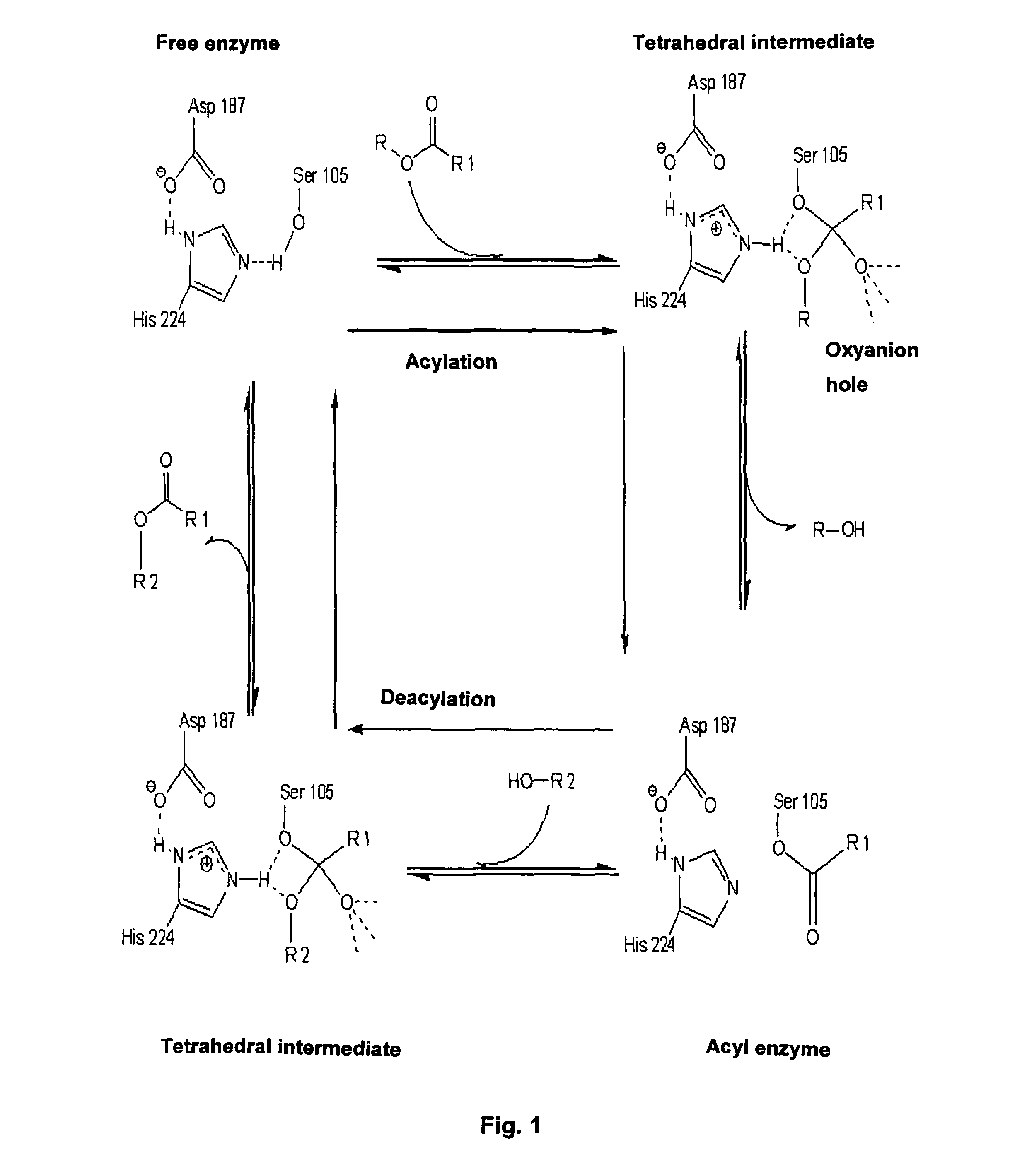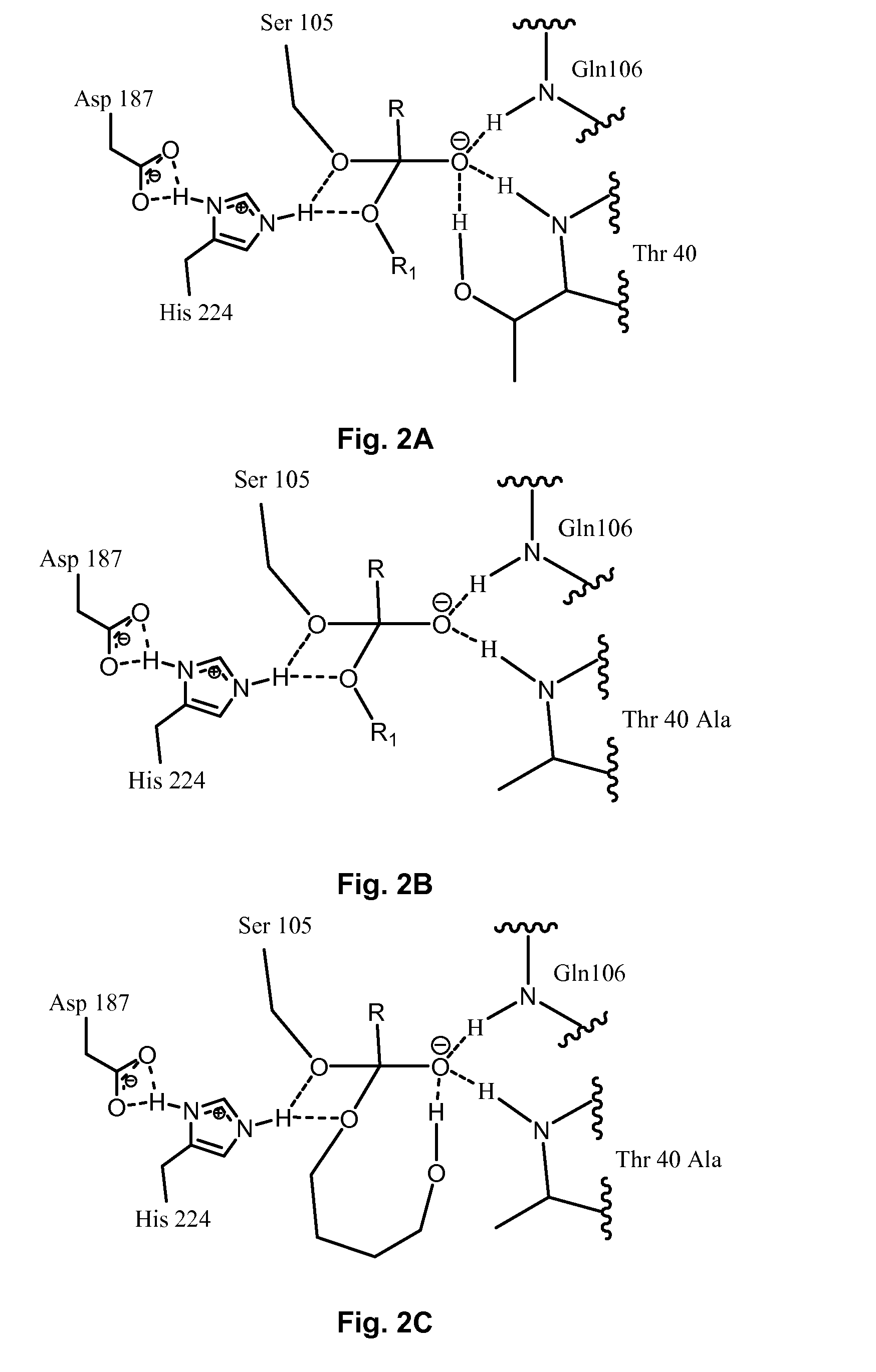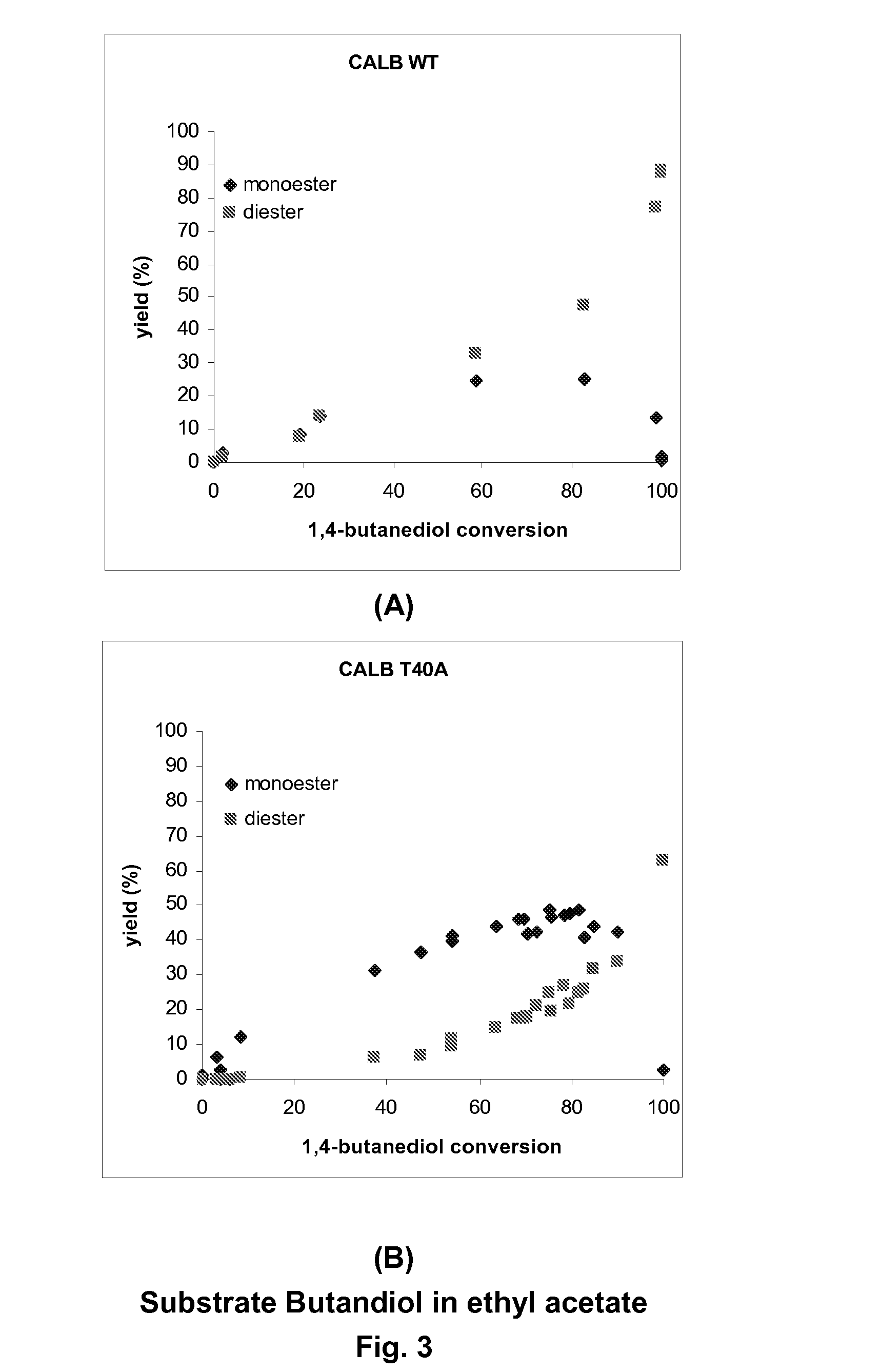Enzymatically catalyzed method of preparing mono-acylated polyols
a technology of acylated polyols and enzymes, applied in the field of enzyme-catalyzed methods of preparing monoacylated polyols, can solve the problems of limited rational enzyme design, selective preparation of monoacylated polyols, and no document teaches or suggests the use of calb enzymes in the method of monoacylating polyols, etc., and achieves high yield
- Summary
- Abstract
- Description
- Claims
- Application Information
AI Technical Summary
Benefits of technology
Problems solved by technology
Method used
Image
Examples
example 1
Preparation of CALB Wild Type and T40A and T40V Mutants and Immobilization
[0272]Wild type and T40A-mutated CALB were obtained from in-house productions from earlier experiments according to previously defined protocol [Magnusson, A., K. Hult, and M. Holmquist, Creation of an enantioselective hydrolase by engineered substrate-assisted catalysis. Journal of the American Chemical Society, 2001. 123(18): p. 4354-4355. Rotticci-Mulder, J. C., et al., Expression in Pichia pastoris of Candida antarctica lipase B and lipase B fused to a cellulose-binding domain. Protein Expression and Purification, 2001. 21(3): p. 386-392.]
[0273]The primers used for T40A mutated CALB were
[0274]
5′-GACTGGTTCCAATTGACAAGC-3′(SEQ ID NO: 5)and5′-GCAAATGGCATTCTGACATCC-3′(SEQ ID NO: 6)
[0275]The T40V mutated CALB was prepared using pGAPZaB CALB construct obtained from earlier studies [Larsen M. W., et al., Expression of Candida antarctica lipase B in Pichia pastoris and various Escerichia coli systems, Protein Expre...
example 2
Enzyme-Catalyzed Acylation Reactions with Different Diols as Substrate and Ethyl Acetate as Acyl Donor
[0286]Reactions were run with three different straight chain primary diols:
1,2-ethanediol, ≧99.5% from MERCK,
1,3-propanediol, 98% from Aldrich and
1,4-butanediol, ≧99% from Aldrich.
[0287]Additionally, reactions with 1,3-propanediol with different substitutions were run:
2-methyl-1,3-propanediol and
2-phenyl-1,3-propanediol,
[0288]3-Hexanone, ≧98% from Aldrich, was used as internal standard.
[0289]Each diol was dissolved to a concentration of 20 mM together with 5 mM of 3-hexanone in ethyl acetate, ≧99% from Fluka, which was used as acyl donor and solvent. Reactions were started by adding 4 ml reaction solution to 20 mg enzyme carrier beads loaded with either wild-type or T40A mutated CALB. Reactions were run at 29° C. on a HLC rotating thermo block. Aliquots of 50 μl were taken, filtered through wool in a Pasteur pipette and diluted with 50 μl ethyl acetate prior to analysis. The 3-hexan...
example 3
Enzyme-Catalyzed Acylation Reactions with Different Diols as Substrate and Vinyl Butyrate as Acyl Donor
[0294]Reactions were run with two different diols:
1,4-butanediol, ≧99% from Aldrich.
2-methyl-1,3-propanediol.
[0295]Each diol was dissolved to a concentration of 10 mM together with 2 mM of decane ≧98% from Fluka and 200 mM vinyl butyrate >99% from Fluka in MTBE 99.5% from Lab-Scan, which was used as acyl donor and solvent. Reactions were started by adding 4 ml reaction solution to 20 mg enzyme carrier beads loaded with either wild-type or T40A mutated CALB. Reactions were run at 29° C. on a HLC rotating thermo block. Aliquots of 50 μl were taken, filtered through wool in a Pasteur pipette and diluted with 50 μl ethyl acetate prior to analysis. The decane used as internal standard were present in the reaction solution throughout both reaction and analysis.
[0296]All reactions were analyzed on GC, Hewlett Packard 5890 series II. A 25 m×0.32 mm WCOT fused silica non-polar GC-column wit...
PUM
| Property | Measurement | Unit |
|---|---|---|
| Tm | aaaaa | aaaaa |
| pH | aaaaa | aaaaa |
| temperatures | aaaaa | aaaaa |
Abstract
Description
Claims
Application Information
 Login to View More
Login to View More - R&D
- Intellectual Property
- Life Sciences
- Materials
- Tech Scout
- Unparalleled Data Quality
- Higher Quality Content
- 60% Fewer Hallucinations
Browse by: Latest US Patents, China's latest patents, Technical Efficacy Thesaurus, Application Domain, Technology Topic, Popular Technical Reports.
© 2025 PatSnap. All rights reserved.Legal|Privacy policy|Modern Slavery Act Transparency Statement|Sitemap|About US| Contact US: help@patsnap.com



